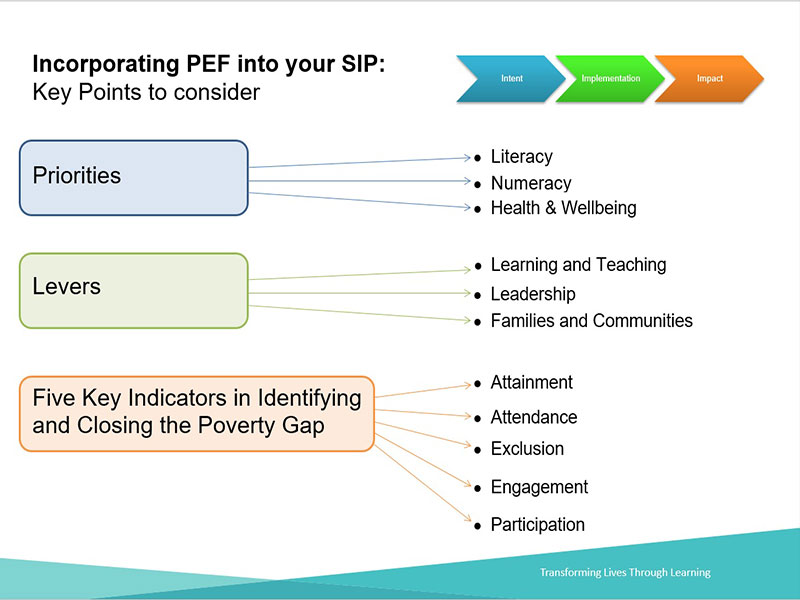
This resource provides guidance and a methodology for helping establish the rationale behind improvement actions, the expected impact of those actions and the measurable indicators that will inform whether they are having a positive impact.
It has been compiled after the delivery of professional learning sessions throughout Scotland and engaging with over 1500 leaders of learning. It is designed to be used as guidance in writing outcome statements which can be set in a variety of context – Scottish Attainment Challenge e.g. Pupil Equity Fund, School Improvement and departmental planning.
The resource includes booklets for staff, PowerPoint presentations and worked examples in order to assist teachers in identifying their poverty related attainment gap and explaining the rationale for interventions.
To improve what you do, you need the right information - information which tells you to what extent an activity is having a positive impact.
Well-defined outcomes are the foundation for that information. It's their job to tell us: who will change, what will change, and how it will change. They also need to be achievable, measurable and specific. If they have these features, they'll help you get the right information in place which can help steer continuous improvement.
The template provided is aimed at reducing the bureaucracy often associated with improvement planning and evaluating and captures the process outlined above.
The two accompanying PowerPoint presentations explain firstly the methodology in building Outcome statements and the importance of key ingredients that must be present in these statements. These are also outlined in this Defining good outcomes booklet.
The worked examples ask you to consider the rationale behind the proposed action or intervention using smart data, to then set an expected impact from each of the interventions which should bring about transformational change. The template brings in school context and asks for specific measures associated with each identifiable intervention.
This part of this National Improvement Hub piece will be updated with more examples in due course.
The approach is intended to identify the area of greatest need, where young people in an identified group are at most risk of missing out on educational experiences and what the school will implement in order to bring about a more equitable experience and system.
Professional learning sessions took place in 14 local authorities with either local authority education staff, school headteachers or leaders of attainment / Pupil Equity Fund. The second of the PowerPoint presentations attached gives a context specific example of the process involved in identifying and specifying need and appropriate interventions or approaches to closing the poverty related attainment gap.

Whilst the resource is aimed towards the Pupil Equity Fund it can be tailored to fit any other improvement process.
To use this self - evaluation approach to define and measure outcome statements it is suggested that a 6 stage process is used as detailed below;
1. What is the thinking behind/reason for a particular intervention?
2. What outcomes are you aiming for?
3. What interventions will you put in place that will help you achieve or overtake your stated outcomes?
4. What impact would you expect ?
5. What measures will you use to monitor/demonstrate progress?
6. Actual Impact.